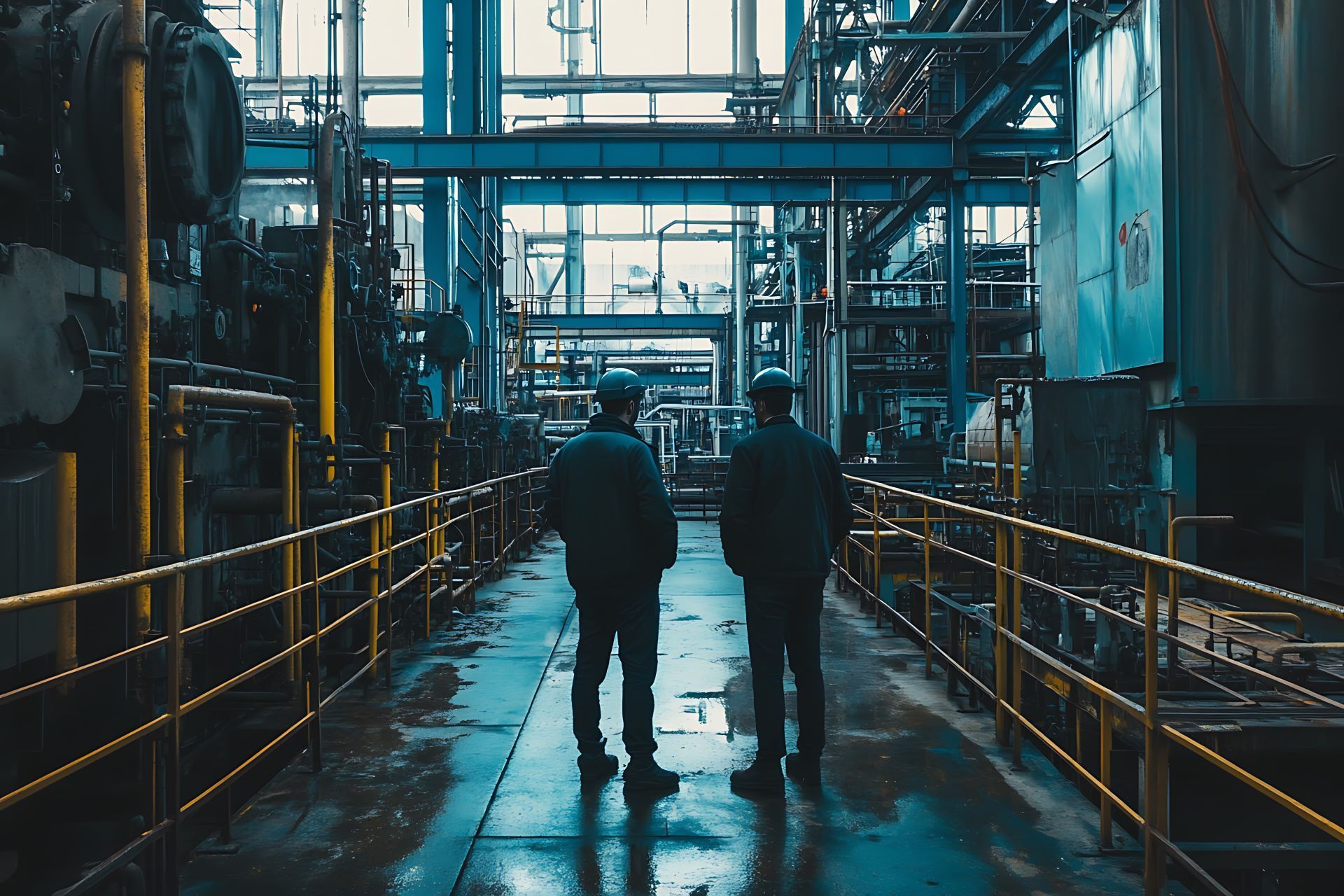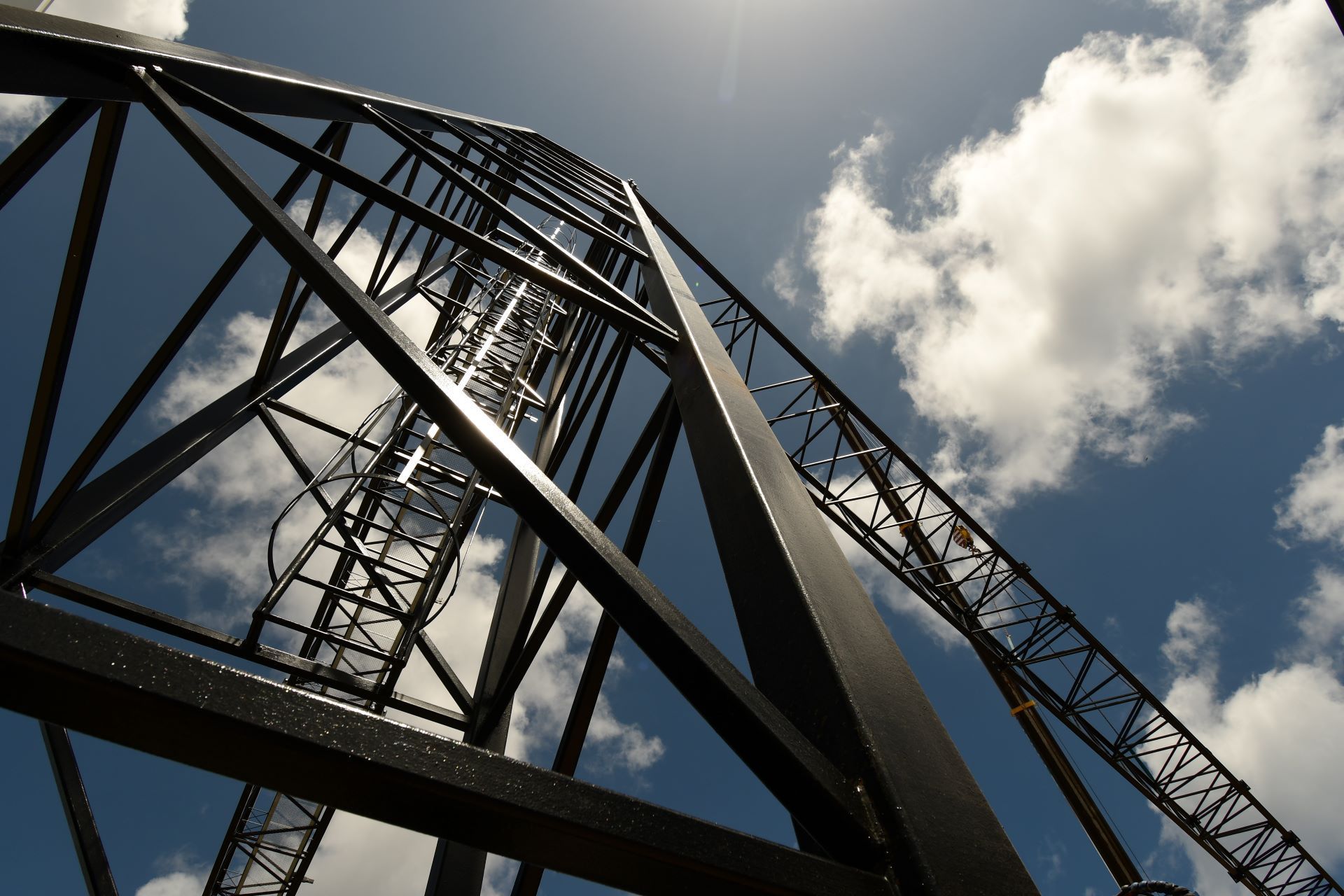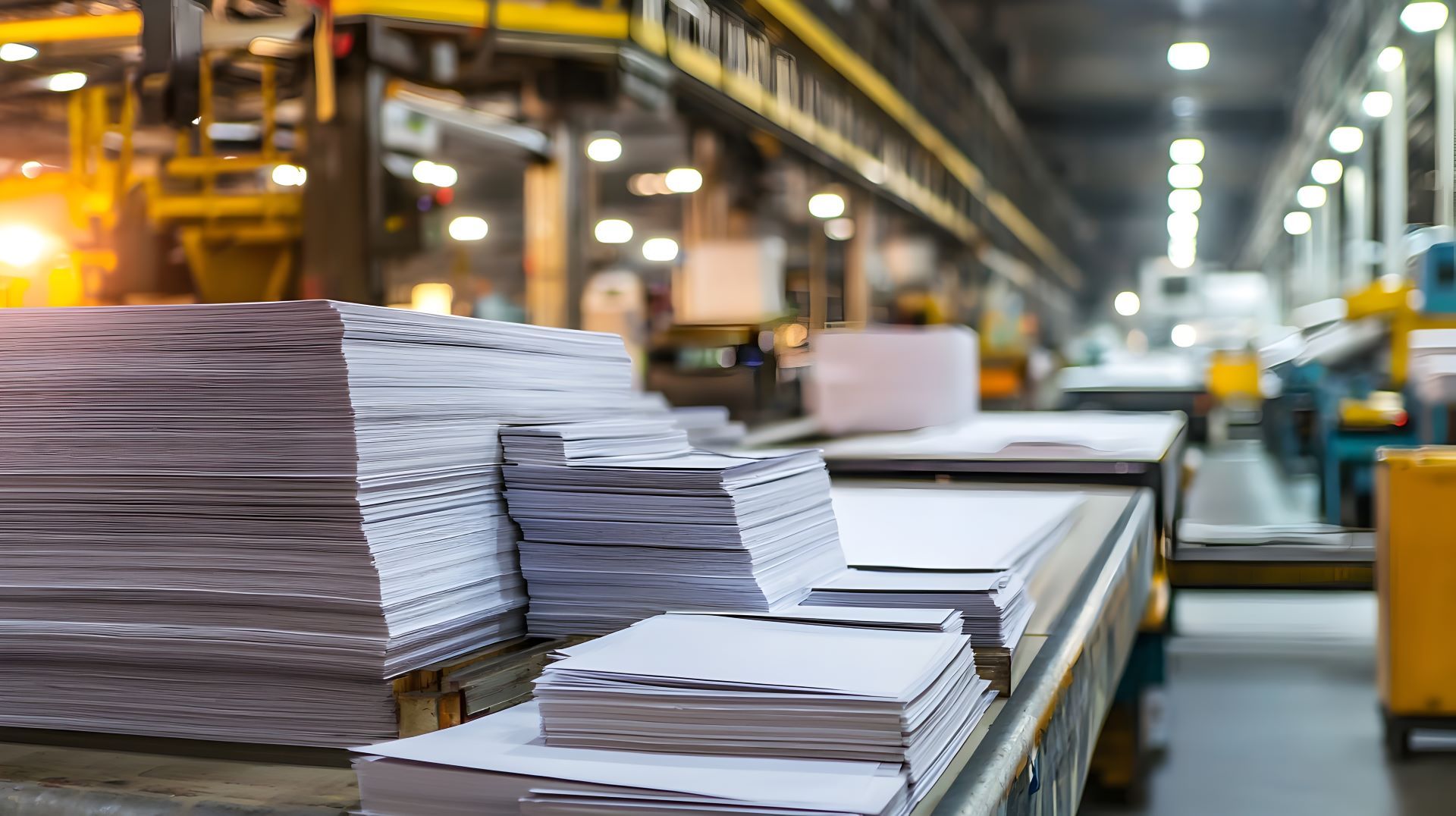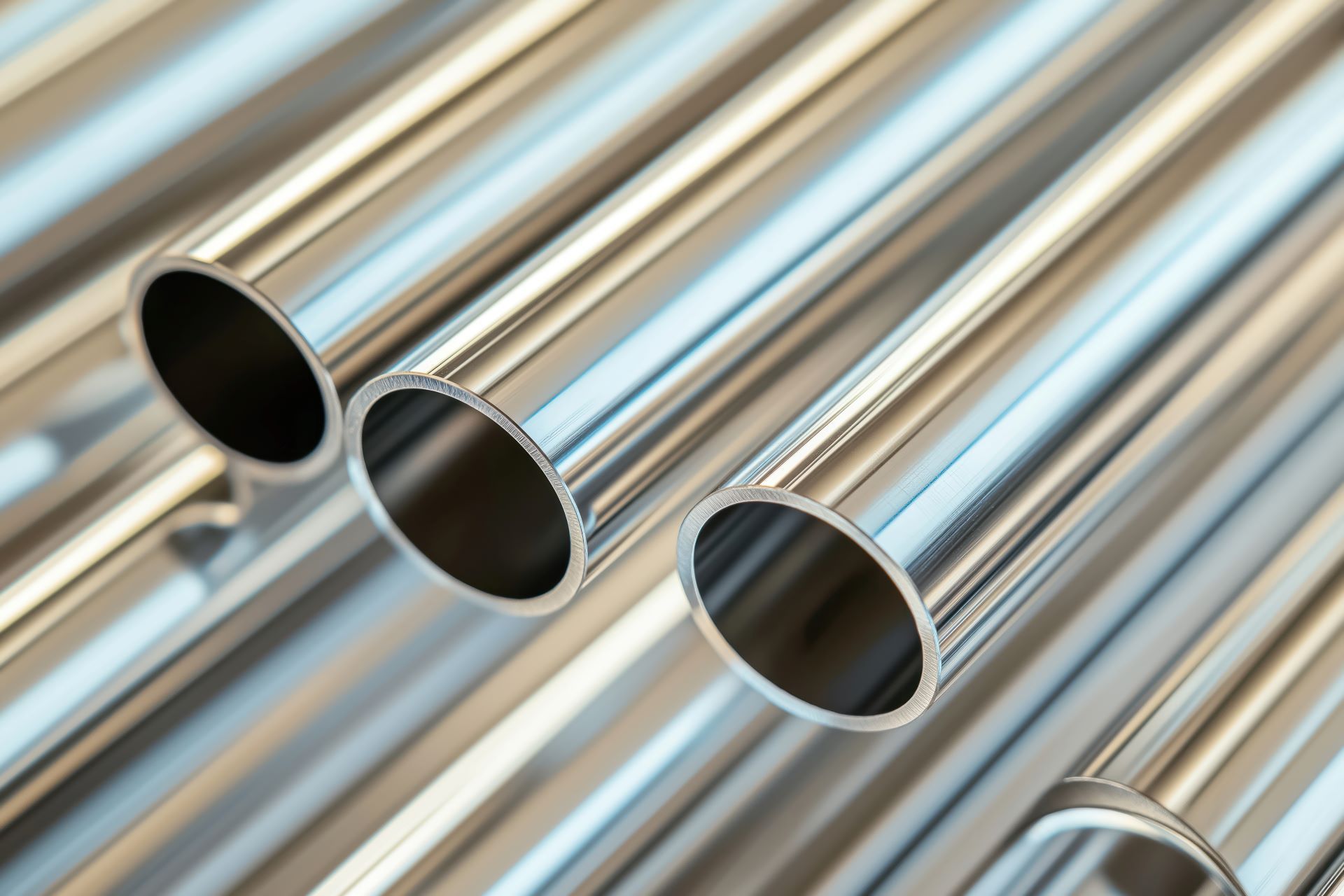Stainless Tread (Checker) Plate vs. Smooth Plate in Wet Environments
When it comes to flooring, platforms, walkways, and structural surfaces exposed to moisture, surface finish matters as much as material strength. In many fabrication projects especially those within food processing, marine, wastewater, and industrial environments contractors and fabricators must choose between stainless tread plate (also called checker plate) and smooth stainless plate.
Both options offer corrosion resistance and strength, but their performance in wet or slippery conditions differs significantly. Choosing the correct plate surface not only enhances safety but also supports long-term durability, cleanability, and structural integrity.
At Action Stainless, we supply both tread plate and smooth plate stainless in a variety of grades, thicknesses, and sizes cut to specification and processed in-house. This guide outlines key differences, performance comparisons, and selection considerations when designing for wet environments.
Understanding the Basics: Tread Plate vs. Smooth Plate
Stainless steel tread plate is typically manufactured with a raised diamond or linear pattern that provides texture and grip. The most common pattern is one-side raised diamonds on a base stainless sheet, offering a non-directional, anti-slip surface.
By contrast, smooth stainless plate has a flat, uniform finish with no intentional surface variation. It's often used in applications where hygiene, cleanability, or tight tolerances are more critical than traction.
Both tread and smooth plate are available in corrosion-resistant grades such as:
- 304 / 304L – general-purpose, strong corrosion resistance
- 316 / 316L – enhanced resistance in chloride-rich or chemical environments
- Other duplex or specialty grades as required for high-stress or coastal/marine exposure
At Action Stainless, we carry tread plate and smooth plate in stock and ready for cut-to-length or shearing based on your project’s specs.
Performance Comparison in Wet or Slippery Environments
When selecting between tread and smooth plate for use in environments where moisture, cleaning cycles, or washdowns are common, several key performance factors should be evaluated:
1. Slip Resistance
Tread plate provides superior grip thanks to its raised pattern. This makes it especially suitable for:
- Stair treads
- Catwalks
- Mezzanines
- Loading platforms
- Access ramps
In industrial settings particularly those involving water, oils, or cleaning agents slip resistance directly affects worker safety. Raised tread patterns reduce the risk of slips and falls by improving foot and tire traction. Smooth plate, in contrast, can become dangerously slick when wet unless paired with mats or anti-slip coatings.
2. Cleanability
Smooth plate excels in sanitary environments. In food processing, pharmaceutical, and beverage facilities, ease of cleaning is often more important than slip resistance. The flat surface allows for:
- Complete washdown without fluid traps
- Easy application of disinfectants
- Fast visual inspection
Tread plate, while safer in slippery conditions, introduces surface grooves that can harbor contaminants if not properly cleaned. For wet zones requiring high hygiene, smooth 316L stainless is often preferred.
However, tread plate can still be used in cleanable designs if proper washdown access and slope drainage are integrated.
3. Drainage and Moisture Control
Tread plate can help prevent pooling or channel water to designated drains due to its raised pattern. When installed with proper slope, it minimizes standing water, making it more practical for flooring in:
- Car washes
- Outdoor walkways
- Marine vessels
- Food packaging stations
Smooth plate, while easier to clean, may allow water to sit longer on the surface unless tilted or finished with anti-slip coatings.
4. Structural Load and Formability
In many fabrication projects, both tread and smooth plates are used for load-bearing flooring or supports. Structurally, the raised pattern in tread plate adds stiffness, which can allow thinner material to support similar loads when compared to smooth plate.
For example, a 12-gauge tread plate may offer comparable rigidity to a 10-gauge smooth plate, depending on mounting method and span. This can help reduce weight in mobile or elevated installations.
Smooth plate, on the other hand, is easier to form, weld, and polish, especially when precision flatness or tight tolerances are required for fit-up or machining.
At Action Stainless, both plate types are available in multiple thicknesses and finishes from mill finish to polished and can be prepped in-house to match your structural or aesthetic requirements.
Material Grades and Wet Environment Suitability
Choosing the right grade of stainless steel is just as important as selecting the right surface. Here's a breakdown of the most common options:
| Grade | Slip Resistance Suitability | Corrosion Resistance in Wet Environments | Best Used For |
|---|---|---|---|
| 304 | Moderate | Good (non-chloride environments) | General indoor platforms, walkways |
| 316 | High | Excellent (chloride and chemical resistance) | Outdoor, marine, washdown, food prep |
| 304L / 316L | High | Superior weldability and corrosion resistance | Food, beverage, and sanitary environments |
At Action Stainless, we maintain inventory in both
304 and 316 tread and smooth plate formats, and we can advise on grade selection based on exposure to moisture, chemicals, salt, or industrial cleaning agents.
Surface Finishing Options and Traction Performance
Both tread and smooth plates can be ordered with different surface finishes depending on application:
- Mill Finish: As-rolled finish, slightly dull but functional
- 2B Finish (Smooth Plate): Brighter, more reflective, easily cleanable
- Polished (#4 or #8): For sanitary or architectural needs
- Pickled and Passivated: Removes scale and improves corrosion resistance
In wet or corrosive environments, these finishes influence performance by reducing buildup or enabling easier cleaning. A smooth plate with a #4 finish may be ideal for a commercial kitchen, while a tread plate with mill finish might serve better in an equipment wash bay or outdoor catwalk.
Fabrication and Installation Considerations
Each plate type brings its own set of fabrication advantages:
Tread Plate
- Requires more attention when forming or bending due to pattern distortion
- More difficult to clean weld areas due to raised texture
- Offers built-in rigidity, reducing need for heavy supports
Smooth Plate
- Easier to weld, polish, and join
- Cleaner cuts during plasma or waterjet processing
- Ideal for sanitary designs, precision cuts, and flat-finish aesthetics
Action Stainless provides in-house shearing, plasma cutting, polishing, and forming services ensuring your stainless plate arrives ready for fabrication or direct installation.
We also offer packaging designed to protect patterned surfaces during transport, so raised diamonds or polished finishes arrive unmarred.
Application Scenarios: Which Plate Type Is Best?
Use Stainless Tread Plate When:
- Slip resistance is the top priority
- You’re working in wet industrial or outdoor zones
- Floor grating or decking will carry foot or equipment traffic
- Structural rigidity is needed without extra supports
Use Smooth Plate When:
- Sanitary or food-grade cleanability is required
- You need a flush surface for equipment mounting or sealing
- Aesthetic polish or architectural appearance is desired
- Precision cutting and forming are central to the project
At Action Stainless, we help customers weigh these options and offer
grade selection, finish matching, and plate processing to fit the job not force a compromise.
Why Action Stainless Is the Right Partner
Choosing between tread and smooth stainless plate isn’t just about availability it’s about confidence in material performance. At Action Stainless, we support your fabrication needs with:
- In-stock tread and smooth plate in 304 and 316 grades
- Shearing, waterjet, and plasma cutting under one roof
- Polishing and finishing for cleanability and visual appeal
- Technical guidance for design and code compliance
- Reliable packaging and fast shipping across the U.S.
We understand how material surfaces interact with real-world working environments. From warehouse floors to food-grade walkways, our stainless plate helps projects last longer, stay safer, and remain in spec.
Final Thoughts: Function First - But Don't Sacrifice Finish
Choosing the right plate surface goes beyond specs it directly impacts safety, sanitation, and service life. Whether you're building platforms in a dairy facility or walkways at a treatment plant, understanding how tread vs. smooth plate performs in wet environments ensures smarter design and longer system life.
Action Stainless delivers the stainless plate you need treaded or smooth, cut and ready to install with expert service to back every order. For safety, compliance, and reliability, trust the plate that performs in the real world supplied by a partner who knows what’s at stake.






